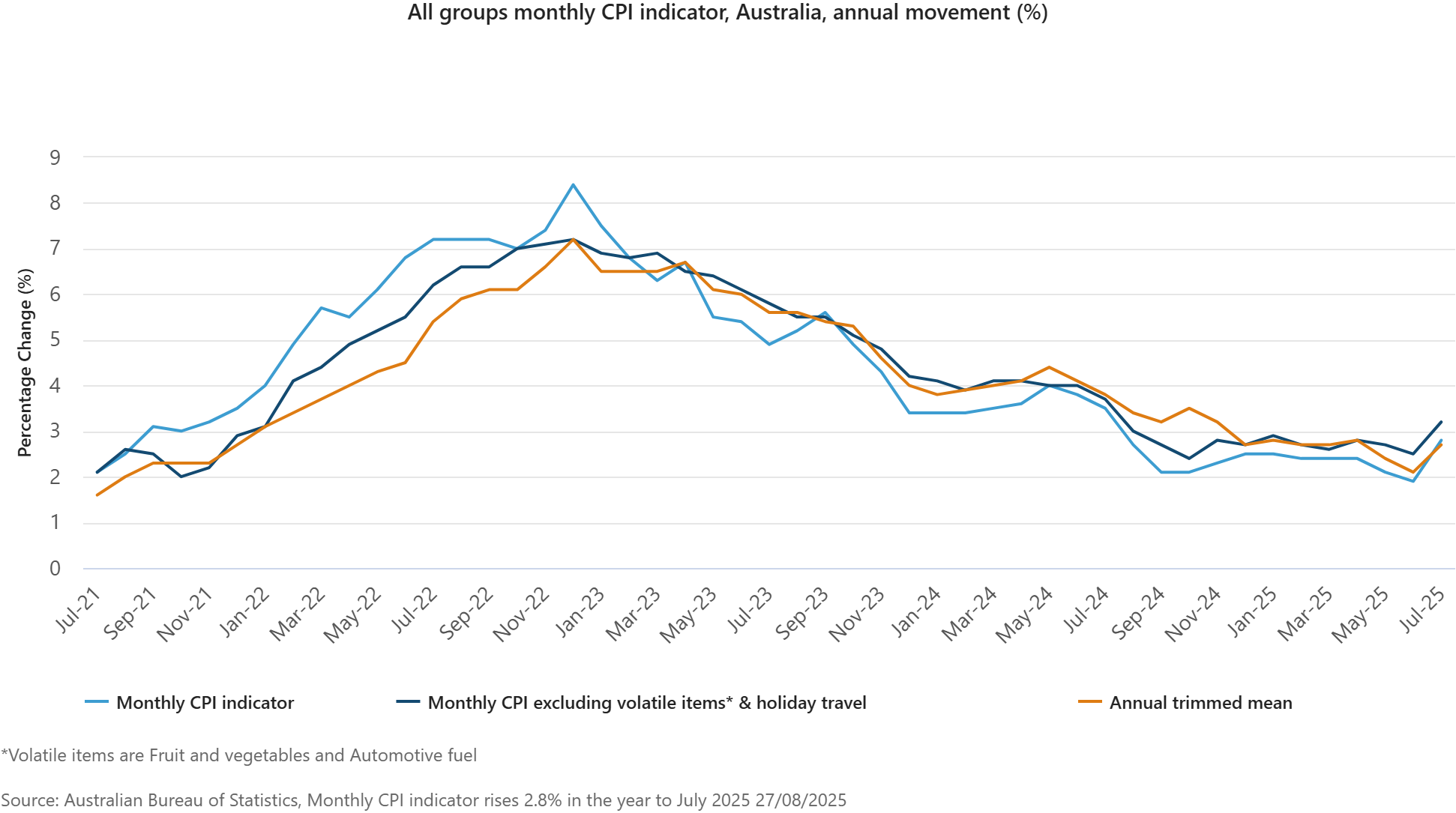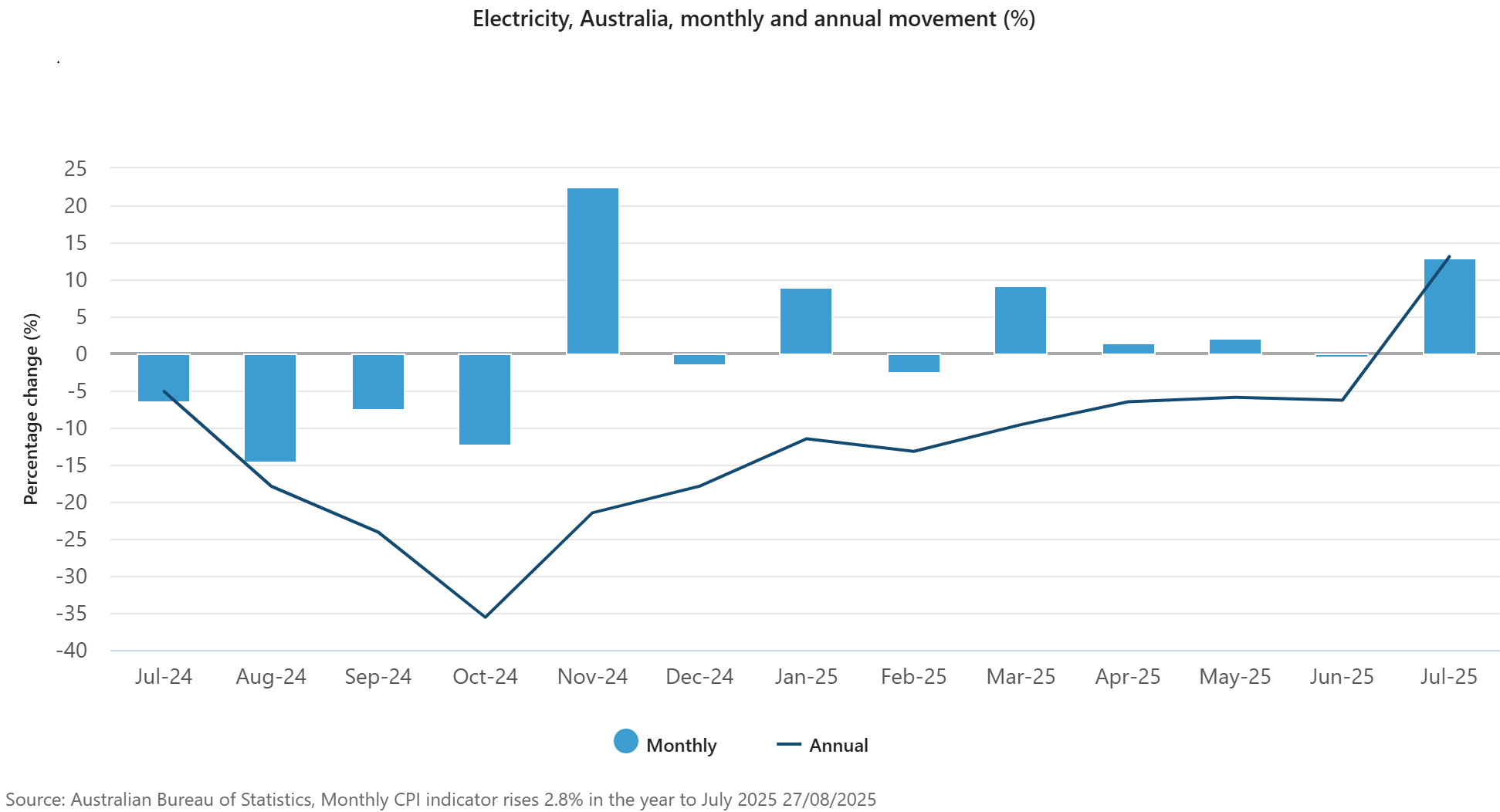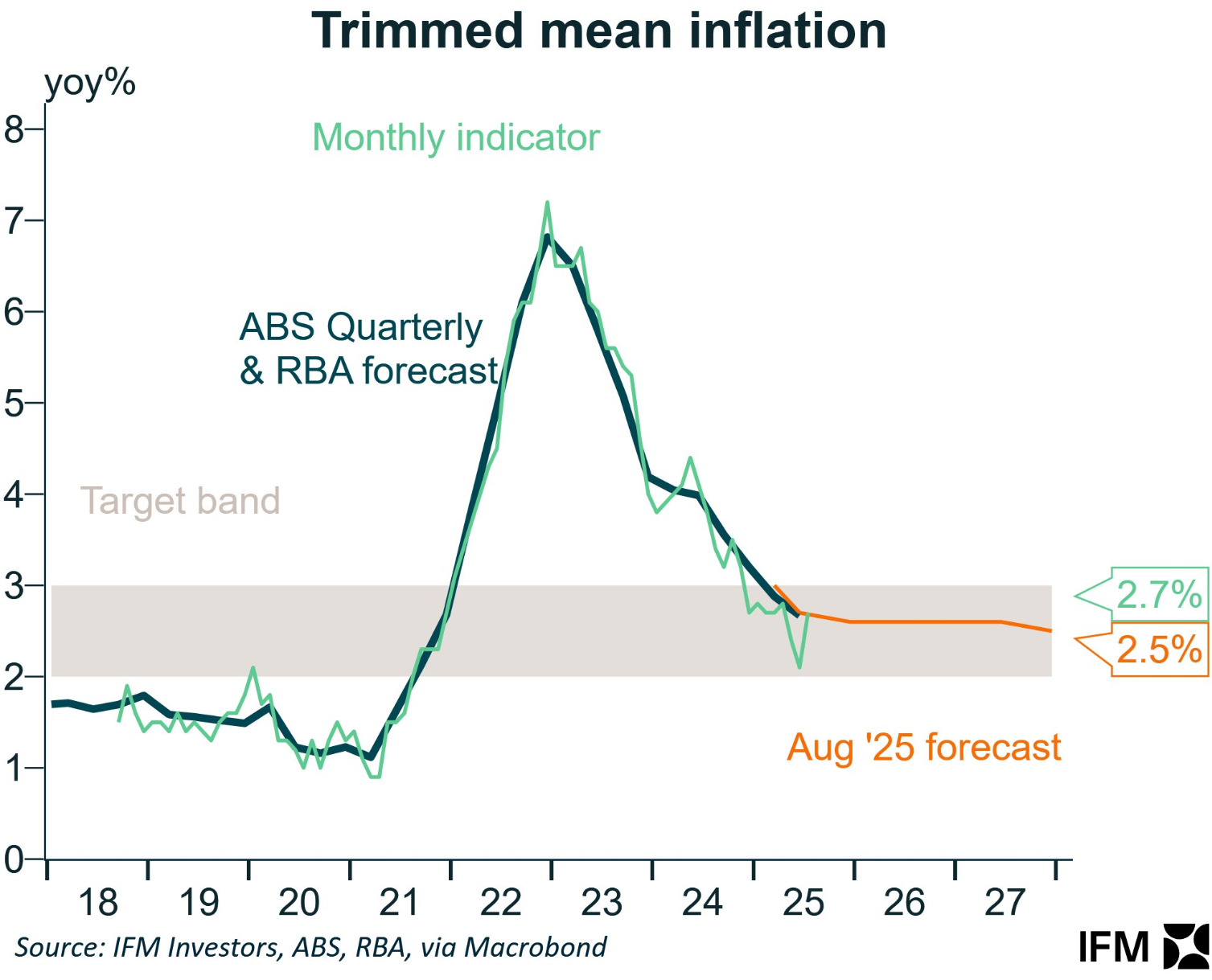The Australian Bureau of Statistics (ABS) has released the monthly CPI indicator for July, which reported a sharp jump in both headline and trimmed mean CPI inflation.
Headline CPI rose 2.8% in the 12 months to July 2025, up from 1.9% in the year to June. The result was way above economists’ expectations of a 2.3% rise.
Trimmed mean inflation rose to 2.7% in July, up from 2.1% in the year to June.

The rise was driven by surging electricity costs amid the ending of subsidies and the rise in default offers:

The ABS explained the impact as follows:
In monthly terms, electricity costs rose 13.0% in July. There were two main contributors to the monthly increase. The largest contributor was that households in NSW and ACT did not receive payments of the extended Commonwealth Energy Bill Relief Fund (EBRF) in July. Payment of rebates for households in NSW and ACT will instead commence in August. This means that those households had higher out-of-pocket costs for electricity in July. In addition to this, prices rose due to annual electricity price reviews coming into effect.
Comparing the indexes for Electricity with and without changes related to the Commonwealth Energy Bill Relief Fund (EBRF) shows that, for the month of July, costs excluding the impact of EBRF rose 4.8%. The increase in electricity costs inclusive of the impact of EBRF was higher (13.0%) mainly due to households in NSW and ACT not receiving rebates in July.
It is important to note that the first month of quarter is heavily skewed to goods price updates. Therefore, it is not as useful as subsequent months.
As illustrated below by Alex Joiner from IFM Investors, the monthly indicator is inherently volatile:

Nevertheless, the unexpected jump in the monthly CPI indicator is somewhat concerning.
Australia’s energy policy idiocy is driving up costs across the supply chain.

